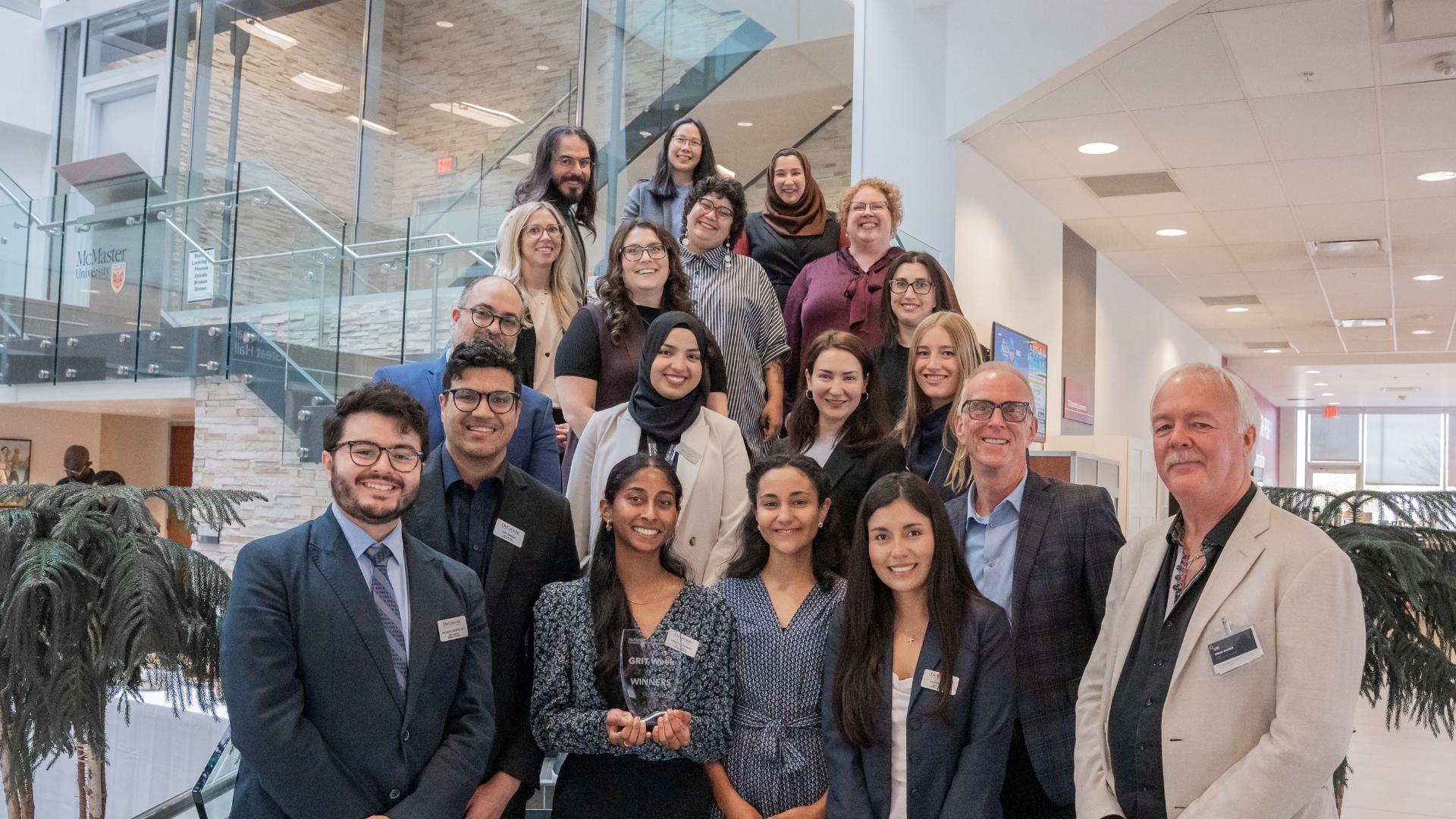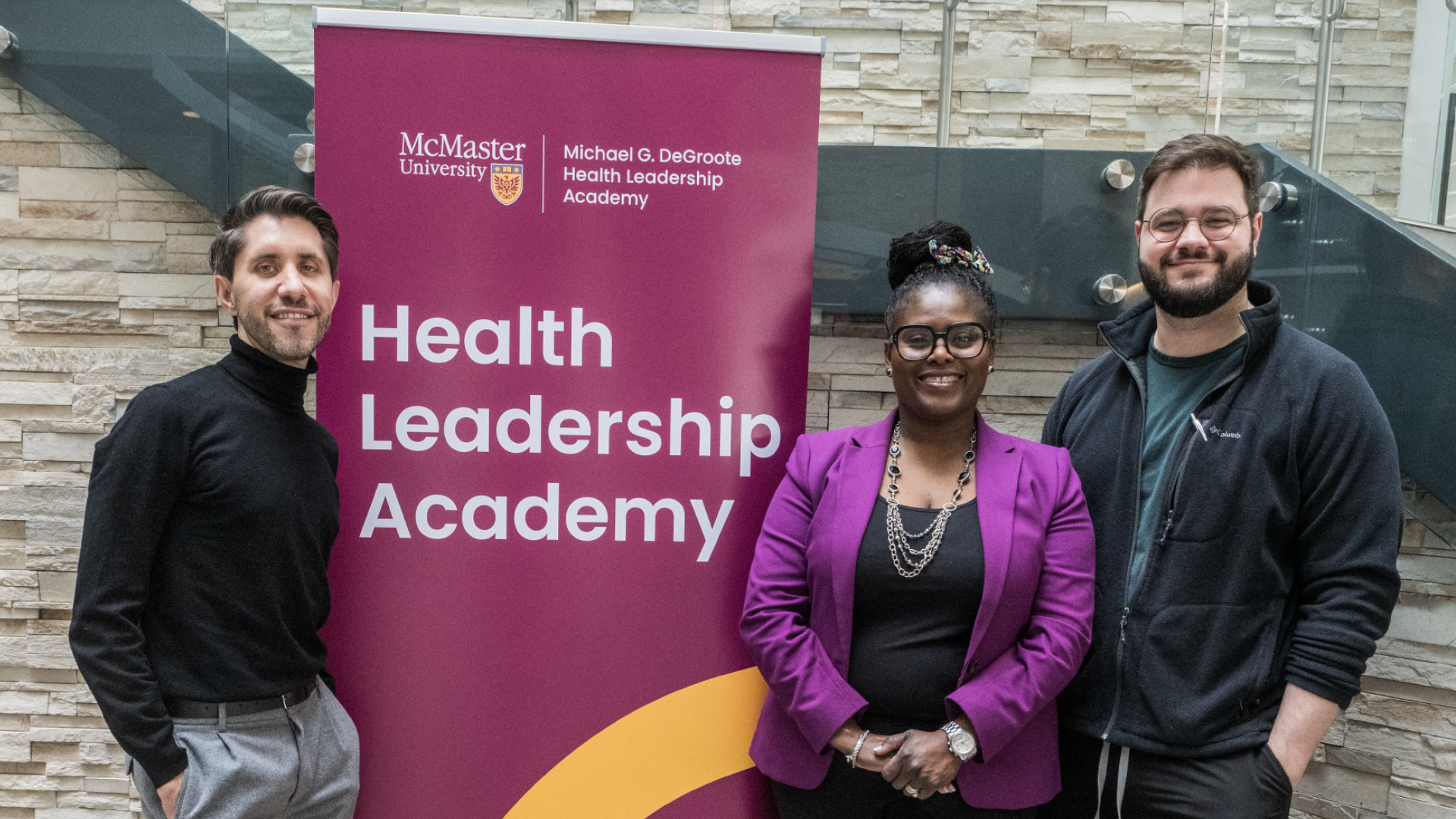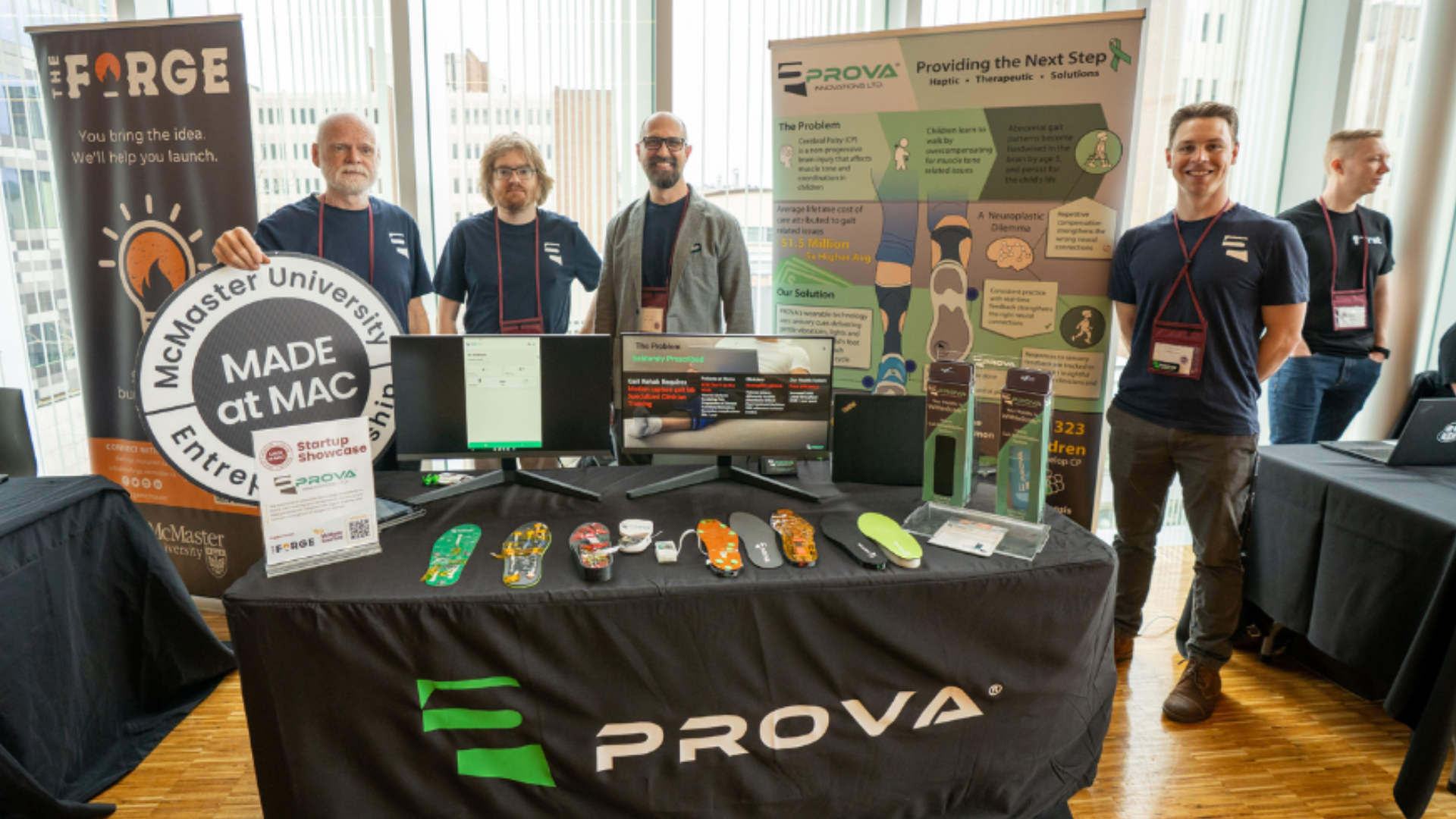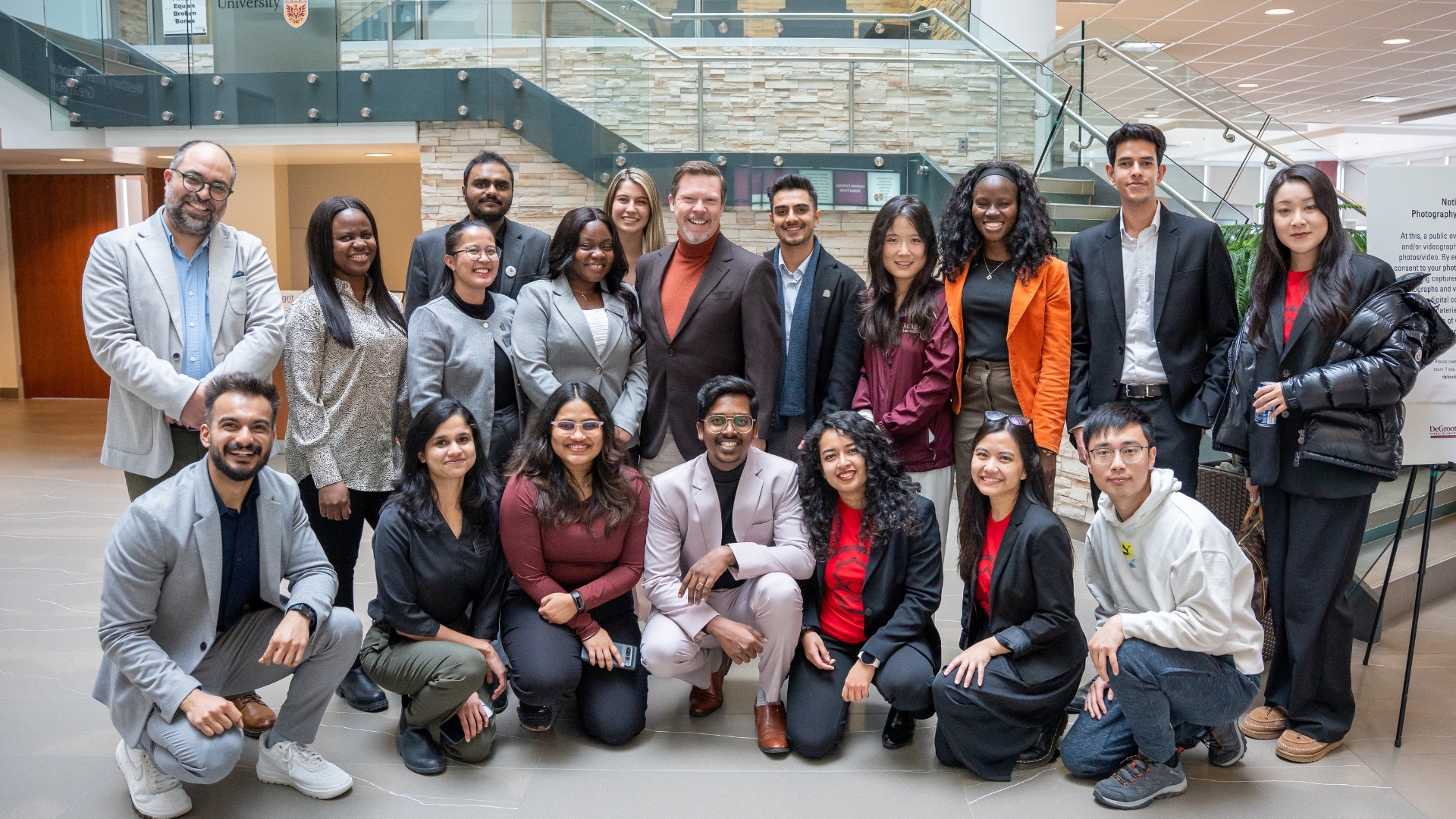ALUMNI HEALTH POLICY AND MANAGEMENT STRATEGIC PLAN | ENGAGING COMMUNITIES
The future of healthcare: Mike Heenan on trends and disruptions
January 22, 2025 ·
Contributed by: Natalie Plechinger, Communications Assistant
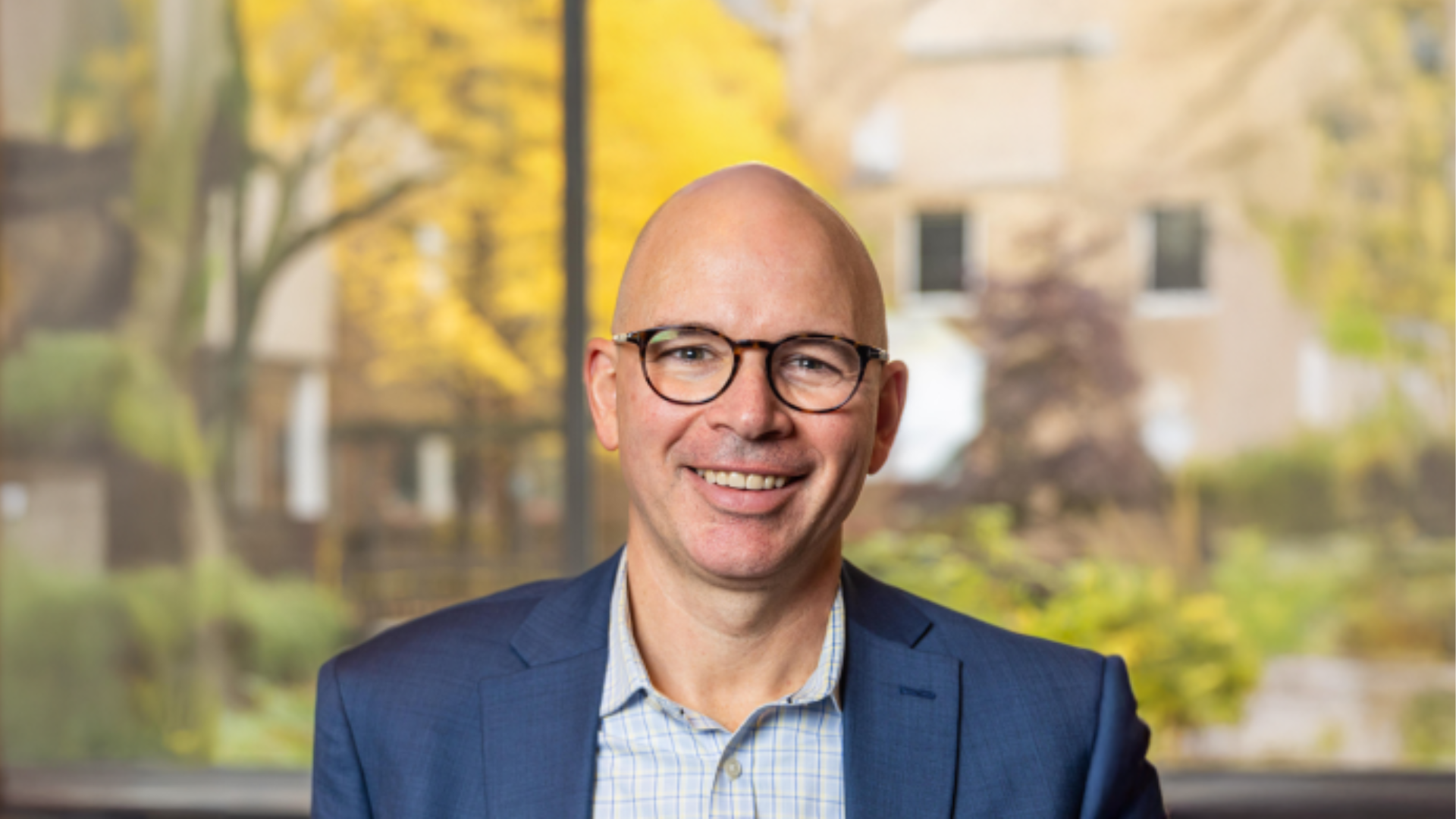
In part two of our interview with Mike Heenan (BA ‘95, MBA ’08, PhD ’23), president of St. Joseph’s Healthcare Hamilton, he recounts the “aha” moment that pivoted him into healthcare, and delves into the disruptive forces that have impacted the industry and the changes that are influencing the future practices of care.
Holding both a PhD in Business Administration Health Policy Management and a Master of Business Administration (MBA) from DeGroote, Heenan is dedicated to applying his continuous learning to leading change and innovation in healthcare.
As a business graduate, Heenan offers a unique perspective on the evolving environment of the healthcare system, and how its leaders can drive real changes and outcomes amid ongoing challenges.
Read part 1 of our conversation: Mike Heenan on people-focused leadership.
What inspired you to get involved in the healthcare field?
My early job out of school was working as a political aide to the Health Minister. I sort of fell into my role at the Health Minister’s office, but not because I was a clinician or a health policy expert. It was because I was a political communications person. We held an event, and the minister attended, announcing $28 million for a children’s rehabilitation center. During the acceptance speech, a 14-year-old girl got up holding onto her walker and said, “With your investment today, I’m going to be able to walk without this.” It was at that moment that I realized there’s a social impact to this work.
Understanding that hospitals are businesses is what inspired me to pursue this career path. I have a budget of $800 million and 5,000 employees, so I need to make sure I have the infrastructure around them to support care delivery. That is a business-related matter, but what motivates me at the end of the day is that I deliver a social service that has an impact on someone’s life. I think this shows that even if you are not a clinician, you can make a difference.
What trends do you foresee in the future of healthcare, and what are institutions such as St. Joseph’s Healthcare Hamilton doing to prepare for them?
The first trend that I foresee is a demand for greater choice by patients and their family. I think we are going to be pressed for different models of care, access to different services and convenience. Why do I need to go to a hospital to get a scan? What can they do in the pharmacy? So, I believe we will be pressed by baby boomers and the next generation who can do everything on their phone.
Integration is the second foreseeable trend that we will be facing. In Ontario we are not necessarily integrated along the continuum of care. For example, primary healthcare services are not a part of the hospital. There are hospitals, long-term care and home care services that are all part of the healthcare system, but they are disparate entities, and they need to come together. A single governance, management and IT system could allow the patient to flow freely through the system and receive care in a seamless way.
Over your career, you have seen profound change in the industry. What has shocked you the most?
What shocked me is that while we discuss new technologies like AI, the adoption rate of these tools in healthcare takes a while. But from a healthcare viewpoint, specifically a clinical example, what surprised me most was the number of nurses and allied health professionals who left after the pandemic. The human resources shortage was almost immediate. We were unprepared for a decrease in these resources, which coincided with the baby boomers becoming sick.
These two factors collided at the same time. Nurses didn’t retire during COVID. They dedicated themselves to this response, persevered through the pandemic, missed time with their families and went out of their way to care for the sick. But then they all began to retire at the same time. Following this, individuals between the ages of 75 and 90 started to become sick with multiple illnesses. The thing that has struck me the most is that unique collision: this population is getting sicker as our health human resources are retiring. We were unable to predict that collision because of the pandemic, which is why it is disrupting the system. We did not have the time to pause and think about that part of the future.
What are some of the disruptive forces you see occurring in healthcare that we need to prepare for?
There are two disruptive forces, the first one being consumer choice. Considering convenience, I think people will become less patient with wait times. People may access and do everything on their phones, but we cannot do so when receiving care; we need to be mindful of this.
The second disruptive force, which I have a great passion for, is physician and staff safety. Every morning, I read through each staff workplace violence incident that has been reported in the organization. About five staff incidents are reported to me daily. If you visit a business where employees interact with the public, you might come across a notice saying that bad behavior will not be tolerated. That has entered the healthcare world in a major way.
People are frustrated, anxious and don’t know what is wrong with themselves, which can manifest into behaviors that put staff at risk. We need to not just physically protect staff; we also need to protect them from verbal abuse that includes derogatory remarks about race or LGBTQIA+ status. It is important to keep our workers safe. Allowing caregivers to go home feeling proud of their work for the day and knowing they will be safe to return to work the following day is an important priority. Because if we don’t it will further impact the challenges we already have in recruitment and retention.


